
The Saunders-Roe SR.45 Princess was a British flying boat aircraft developed and built by Saunders-Roe at their Cowes facility on the Isle of Wight. It has the distinction of being the largest all-metal flying boat to have ever been constructed.

The Saunders-Roe SR.A/1 was a prototype flying boat fighter aircraft designed and built by British seaplane manufacturer Saunders-Roe. It was the first jet-propelled water-based aircraft in the world.

The Saunders Roe A.27 London was a British military biplane flying boat built by the Saunders Roe company. Only 31 were built, entering service with the Royal Air Force in 1936. Although due for replacement by the outbreak of World War II, they saw some active service pending the introduction of the ultimately unsuccessful Lerwick.

The Saunders-Roe A.36 Lerwick was a British flying boat built by Saunders-Roe Limited (Saro). It was intended to be used with the Short Sunderland in Royal Air Force Coastal Command but it was a flawed design and only a small number were built. They had a poor service record and a high accident rate; of 21 aircraft, 10 were lost to accidents and one for an unknown reason.

The Supermarine Stranraer is a flying boat designed and built by the British Supermarine Aviation Works company at Woolston, Southampton. It was developed during the 1930s on behalf of its principal operator, the Royal Air Force (RAF). It was the RAF's last and fastest biplane flying boat.

The Blackburn Iris was a British three-engined biplane flying boat of the 1920s. Although only five Irises were built, it was used as a long-range maritime reconnaissance aircraft by the Royal Air Force, where it equipped a squadron for four years, being used to carry out a number of notable long-distance flights. The final version of the Iris, the Iris Mark V was developed into the aircraft that replaced it in Squadron service, the Blackburn Perth.

The Supermarine Seagull was a British amphibious, military flying boat and the last to be built by the Supermarine company. Design started during the Second World War but it did not fly until three years after the war had ended and the project was cancelled without it being adopted for service.

The Supermarine Southampton was a flying boat of the interwar period designed and produced by the British aircraft manufacturer Supermarine. It was one of the most successful flying boats of the era.

The Supermarine Scapa was a British general reconnaissance flying boat built by Supermarine that was used by the Royal Air Force between 1935 and 1939. It was developed from the Southampton and formed the basis of the later Stranraer flying boat.
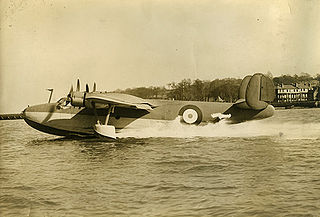
The Saunders Roe A.37 Shrimp was a 1930s British two-seat four-engined experimental flying boat built by Saunders-Roe Limited ("Saro") at Cowes.
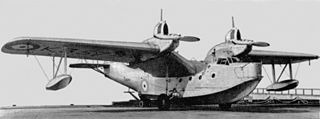
The Short R.24/31 was a British twin-engined, high-wing cantilever gull winged monoplane flying-boat designed and built by Short to Air Ministry specification R.24/31 for a "General Purpose Open Sea Patrol Flying Boat". The contract also specified the use of the experimental Rolls-Royce Goshawk engine. The Saunders-Roe London and the Supermarine Stranraer competed successfully for this contract.

The Supermarine Air Yacht was a British luxury passenger-carrying flying boat. It was designed by Supermarine's chief designer R. J. Mitchell and built in Woolston, Southampton in 1929. It was commissioned by the brewing magnate Ernest Guinness, and was the first British flying yacht built to the order of a private owner. Only one machine was built.
The Saunders-Roe Duchess also known as the model P.131 was a British design for a large jet-powered flying boat envisaged by Saunders-Roe, based in Cowes on the Isle of Wight.
The Saro A.33 was a British prototype flying boat built by Saunders-Roe Limited in response to a British Air Ministry Specification R.2/33 and in competition with the Short Sunderland.
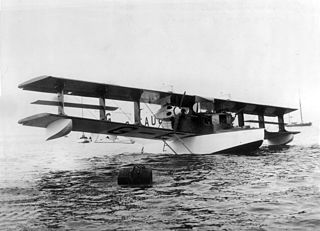
The Saunders Kittiwake was a British amphibian flying-boat built by S. E. Saunders at East Cowes, Isle of Wight.
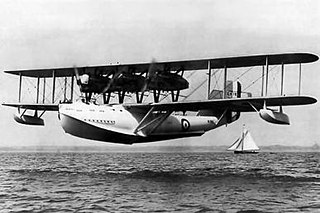
The Saunders A.3 Valkyrie was a large three-engined biplane flying boat with a wooden hull built to an Air Ministry specification. It was not found suitable for production and helped to confirm a preference for metal-hulled flying boats.
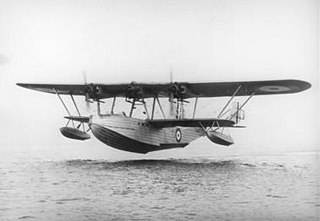
The Saunders Severn was a three-engined biplane flying boat intended for maritime patrol duties. It performed well but was fragile and unreliable. Only one was built.

The Hiro H2H, or "Navy Type 89 Flying boat", was a Japanese patrol flying boat of the 1930s. Designed and built by the Hiro Naval Arsenal, it was a twin-engined biplane that was operated by the Imperial Japanese Navy.
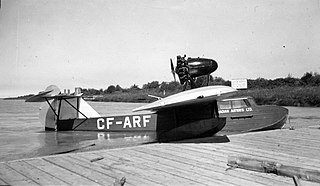
The Boeing-Canada A-213 Totem was a Canadian single-engine pusher monoplane flying boat intended for forestry and fisheries patrols as well as a light utility transport for the British Columbia coastline, where there are few flat places for runways, and waterways are plentiful. The sole example, CF-ARF, CB10 was designed and built by Boeing Aircraft of Canada. The name refers to the Totem poles used by the First Nations in British Columbia.

The Hiro H3H1 or Navy Type 90-1 Flying boat was a Japanese flying boat bomber built in 1931. It was the first large all-metal aircraft built in Japan. Only one was completed.


















